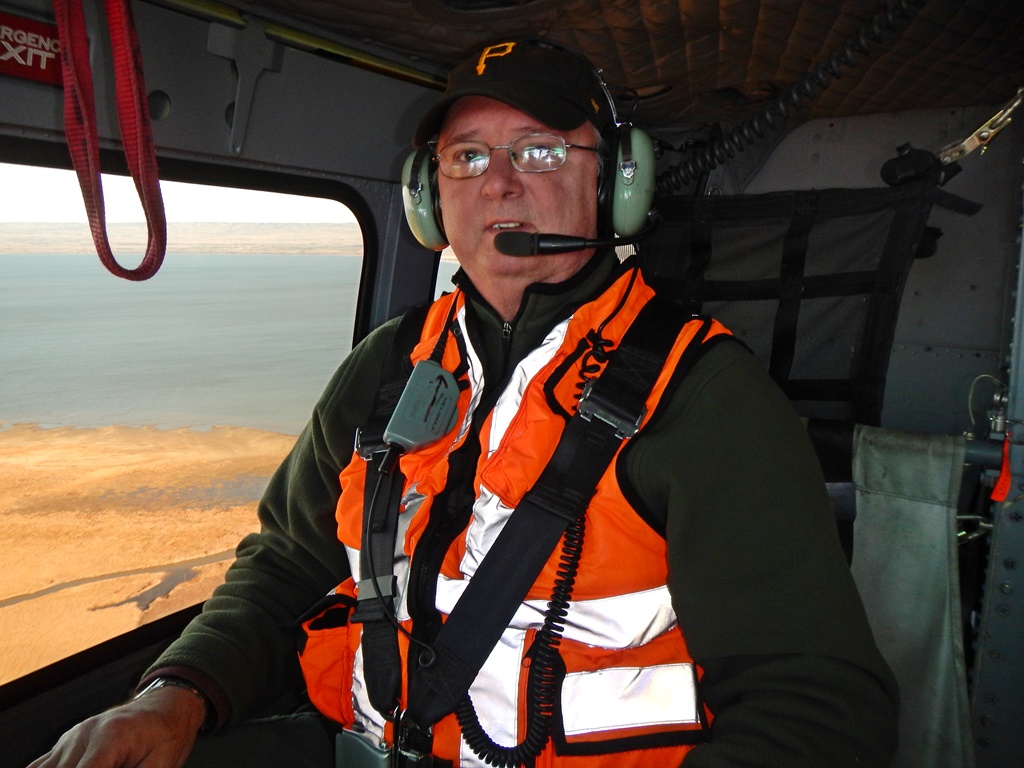It’s not easy being a tree these days.
Standing tall and swaying in the breeze isn’t all it’s cracked up to be. In fact, the trees that comprise Canada’s forests are constantly under attack. It’s up to people like Rory McIntosh to identify, assess and prevent potential risks to our native tree populations.
From the sprawling mixed woodlands in the east to the coastal forests and ancient rain forests in British Columbia, McIntosh has extensively studied trees native to these regions and has identified pests that threaten their livelihood.
Though one particular threat poses a greater challenge – climate change.
Just recently a mainstay in the weekly news cycle, climate change and its effects have for several years taken a toll on Canadian forests. The worst may be yet to come.
“Climate change will continue to have a direct impact on climate suitability and susceptibility of the forest to invasive pests,” McIntosh, a provincial forest entomologist and pathologist with the Government of Saskatchewan, explained.
“As we continue this warming trajectory, more and more forests that was previously not suitable for the mountain pine beetle or other pests are now becoming viable hosts, susceptible to attack. As conditions change, insects can develop and go through their life cycle without restriction and winter mortality is reduced.”
Not exactly the ideal context for the term hospitable Canadian.
McIntosh, a native of England, been involved in forestry since 1975. He got his start in the industry in Germany’s Black Forest before he moved to Canada in 1981 to attend the University of New Brunswick. He moved across the country in 1990 to earn his Masters and eventually his PhD at the University of British Columbia. He continued research on insect chemical ecology as a post-doctoral fellow at the Centre for Pest Management at Simon Fraser University.
Rory arrived in Saskatchewan in January 2000 as Saskatchewan Ministry of Environment’s insect and disease specialist. Since then, he has led the development and implementation of the forest health program, including policy development, surveillance and monitoring and early detection and control. Rory also is active on the national scale through work with the Canadian Council of Forest Ministers, Forest Pest Working Group and the development of the National Forest Pest Strategy.
As a member of the Association of Saskatchewan Forestry Professionals, Rory’s work hopes to achieve assurance with the public of his knowledge and skill in the professional practice of forestry – in particular as it relates to forest health and supporting knowledge-based decision making to ensure sustainable forest development.
However, some things that are pests now could become less of a pest. For example, in Quebec and Ontario, the spruce budworm is migrating further north. That’s because its southern range is becoming less suitable due to warmer temperatures.
McIntosh already has observed stressed forests due to drought. Extreme temperature fluctuation led to spruce failure in Saskatchewan, as well as a massive outbreak of the mountain pine beetle in B.C. In fact, that particular outbreak destroyed more than 50 per cent of the pine growing stock in that province.
Though McIntosh warned that we’re going to find insects that weren’t a problem in the past become a problem now and into the future because of climate change.
“It’s takes time for the impacts for environmental stressors to become visible. It is like turning around an ocean tanker ship. You can crank the wheel, but the ship doesn’t actually turn for another 25 kilometres,” McIntosh said. “The impacts you’re seeing now are impacts from possibly as far back as 2000.”
McIntosh and his colleagues across the country already have modified their monitoring and surveillance techniques because of changes in the climate. Studies conducted on the health impacts to hardwood trees have been expanded to include the study of softwoods. In addition, McIntosh said they are proposing to extend aerial surveillance to incorporate lands that aren’t of commercial value to look at impacts there.
Keeping a close eye on species that have historically been a native pest in our forests cannot be overlooked. However, we must also remain vigilant in monitoring non-native or invasive species like the emerald ash borer, Dutch elm disease and the range expansion of mountain pine beetle. The threat of mountain pine beetle spreading into Saskatchewan’s boreal jack pine remains by far the greatest pest risk to sustainable forest management in the boreal forest in Saskatchewan and across Canada.
In the meantime, we can embrace the old-fashioned prairie winters. Temperatures that hit -40C or colder are a major deterrent to the beetle. Those, and wet and windy summers, as the beetles are reluctant to fly in such weather.
“Those kinds of conditions are helping to keep our forests safe from a lot of other problem insects and diseases. It is crucial we continue sustained monitoring efforts. If you’re not paying attention, then you’ll never know until it’s too late.
“A lot of that is due to changes in climate suitability. Areas that were previously unable to support the beetle – the higher-elevation forests – are now suitable. This, together with an abundance of old forest – resulted in the perfect storm that led to the outbreak from a few years ago that ravaged B.C. and eventually breached the Rockies and scattered into western and central Alberta.
Dispersal events have been captured on radar. In fact, there were so many beetles in the air that a professor at the University of Northern British Columbia detected the cloud of insects. As well, aerial surveillance can identify trees from previous years and see the distribution of red trees (where the beetles were last year).
“There’s always something to keep an eye on. There always has been,” McIntosh said. “Now, with climate change a very real challenge, we’re finding more and more potential threats today and expect that to continue well into the future.”
Find out more about the Association of Saskatchewan Forestry Professionals on their website.
Image courtesy of ASFP.

